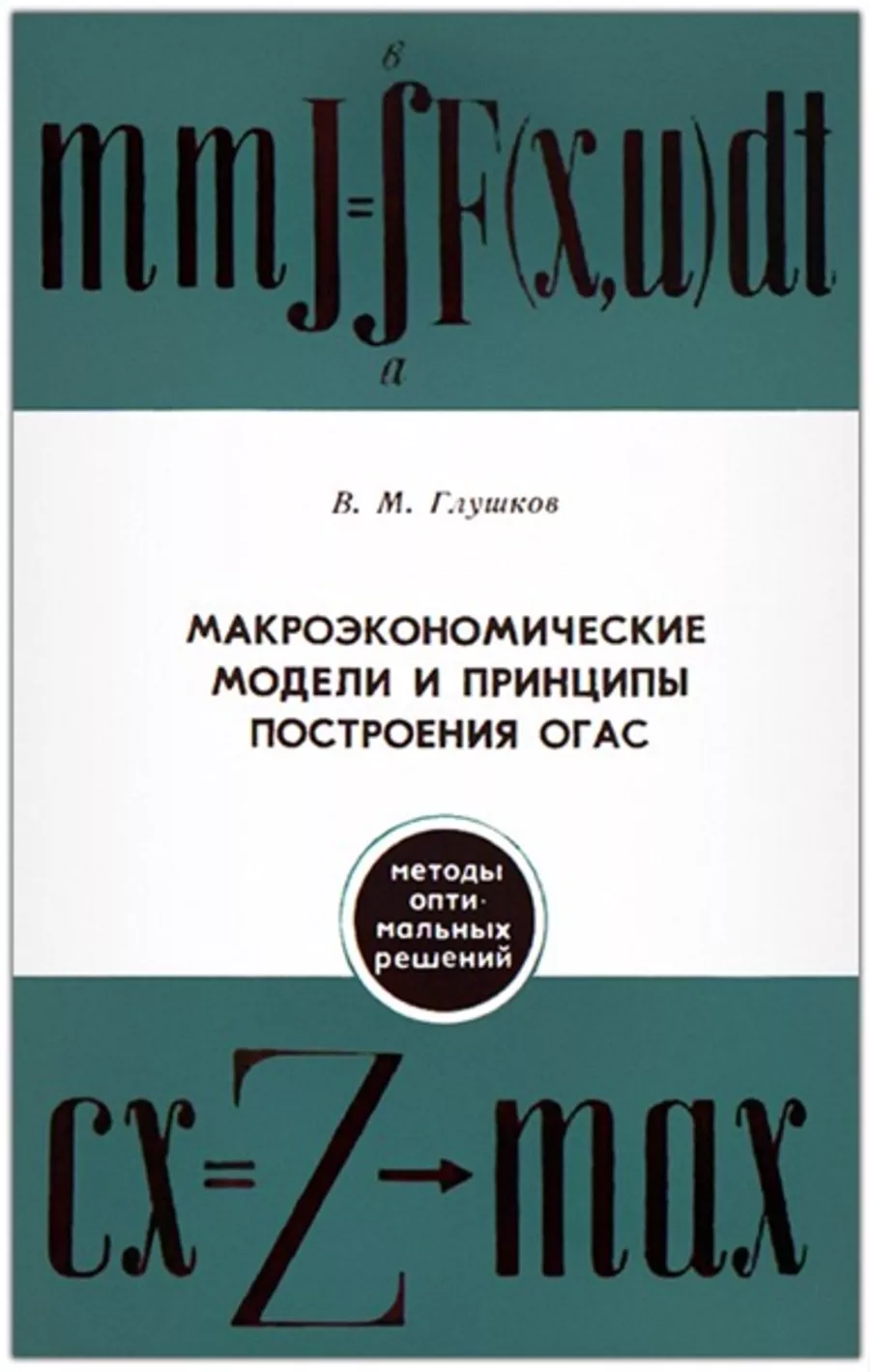Introduction
The directives of the XXIV Congress of the CPSU set the task of creating a Nationwide system for collecting and processing information for accounting, planning and management of the national economy (OGAS). To implement the decisions of the congress, a lot of work has been launched in our country to create separate functional units of the OGAS (Automated system of planned calculations. Industrial automated control systems, etc.) In relation to these links, various variants of economic and mathematical models have been developed, some of which are described in the literature. However, no attempt has yet been made in the literature to describe a sufficiently complete system of models covering all the main links of the OGAS.
In this book, the author has attempted to write a kind of "introduction to the OGAS", which would give the first orientation in the possible ways of joining the various subsystems of this complex system.
The book is intended for OGAS developers, as well as for a wide range of mathematicians, programmers, system engineers and computer specialists who are not familiar with economics, but who want to get an idea of the problems that arise when automating the management of the economy in its upper links. It will be useful to economists who are not familiar with new mathematical methods, a systematic approach, and management capabilities provided by modern computers and computer networks.
Automation of management, in turn, poses new challenges to the organization and development of economic management mechanisms. So the creation of a truly effective economic management system is possible only on the basis of the right combination of all three components — organization, economic mechanisms and automation of information processing.
Estimates made at the end of the 60s showed that for the effective management of the economy of the Soviet Union, at that time a continuously operating computing power of at least 300 million arithmetic operations per second was required. This corresponds to the power of several dozen modern large computers or the power of one computer of the near future [1]. However, it would be a big mistake to think that one machine or a complex of machines, even performing not hundreds of millions, but hundreds of billions of operations per second, are able to solve all the problems of economic management. The fact is that an effective economic management system is possible today only on the basis of a dialogue in human—machine systems. At the same time, the formulation of management goals and objectives, as well as the evaluation of the decisions being prepared and giving them final legal force should remain the responsibility of a person at any level of development of management automation.
Problem solving .economic management at all levels requires the involvement of many hundreds of thousands of specialists in the dialogue. Since the bulk of these specialists fall on the grassroots (enterprises, design bureaus, etc.) distributed throughout the country, the most appropriate technical solution for building the technical base of the management system is a reasonable combination of the principles of centralization and decentralization of computing technology. In other words, the task of automating management on a national scale requires the creation of a State Network of Computing Centers (GSVTS) covering the entire territory of the country. Only on the basis of such a network of computing centers connected by an automatic communication system can a Nationwide automated system for collecting and processing information for accounting, planning and management of the national economy (OGAS) be built, which in modern conditions is a necessary component of improving the economic management system.
The nationwide automated control system is not limited only to the automated collection and processing of information and the corresponding system of mathematical models. The most important issues here are the organization of the human link in the management system and the development of a system of human-machine management models. One of the possible systems of models of this kind is described in this book. In contrast to the classical macroeconomic statements of planning and management tasks, the book pays considerable attention not only to the mathematical and economic, but also to the human aspect of management, considered in an inseparable unity within the framework of a systematic approach.
It is clear that any complete description of such a complex system as OGAS would require a multi-volume publication and the work of a large group of authors. Therefore, this book outlines only the basic contours of the system. The task of fully disclosing the content of all the described methods is not pursued, and cannot be pursued. Basically, we limit ourselves here to setting tasks and describing the basic ideas necessary to understand the methods of their solution.
As you know, the belief in the omnipotence of economic and mathematical methods that existed in the mid-60s has long been replaced by a more realistic systematic approach that divides the burden of economic management tasks between computers and people. Therefore, the book systematically follows the principle of using "pure" economic and mathematical models only for pre-planned orientations. As for real planning and management, they are based on a system of human-machine models based on the principle of using the best qualities of a person and a computer.
In the era of the scientific and technological revolution, the complexity of economic management tasks is growing rapidly. This growth is due to four main reasons: 1) a rapid increase in the range of products; 2) a significant increase in the average complexity of products and their production technology; 3) a sharp acceleration of the process of improving the changeability of products; 4) the emergence of new management tasks, among which, first of all, the task of managing scientific and technological progress in inextricable connection with the economy should be named. It should also be borne in mind that as the economic management system is optimized, each next step on the way to the optimum turns out to be more difficult than the previous one.
To quantify the complexity of management tasks, we note first of all that in economics we can distinguish a class of management tasks that depend not on the organizational structure of management, but on objective material flows. Among such tasks (which we will call objectively necessary) are the tasks of determining what, where, when and in what quantities to produce, what equipment and technology to use, from whom, when, in what assortment and quantity to obtain the necessary material and technical support of the planned production, etc. The complexity of solving these problems depends on the accuracy with which we want to approach the optimum. Given some reasonable accuracy of such an approximation (say, 1%), we get the opportunity to characterize the overall complexity of all objectively necessary control tasks quantitatively (for example, the number of arithmetic operations on numbers of a certain bit depth required to solve the problem).
If we characterize the economy by such indicators as the cost of all fixed assets or the value of the gross product, it is not difficult to conclude that the complexity of economic management tasks is growing faster than the economy itself. Indeed, if the economy developed only in a purely extensive way, due to a simple increase in the number of enterprises (without any connections between them), then, as it is not difficult to understand, there would be a directly proportional dependence of P = aO. between the total complexity of objectively necessary management tasks and the gross product C}.
Since, with the development of the economy, connections between enterprises arise and grow rapidly, the complexity of the tasks of managing the economy grows faster than the gross product
At the same time, with the intensive path of economic development (due to the growth of labor productivity), the total number of employees N grows more slowly than <).
Thus, it becomes clear that at all times the complexity of economic management tasks has grown faster than the number of people employed in it. Experimental studies show that in the era of the scientific and technological revolution, the complexity of economic management tasks is growing faster than the square (k2) of the total number of people employed in the economy. But the quadratic function Y2 in any B >0 has the property that with the growth of N it will surpass any linear function cY(c>o).In other words, there must come a time in the development of the economy when the total complexity of objectively necessary management tasks will exceed the total ability of all active members of society to process information, since this ability does not grow faster than N.
This moment is naturally called the second information barrier, taking into account the fact that there was another information barrier earlier, when the total complexity of the tasks of managing a closed economic system exceeded the capabilities of one person. The transition through the first information barrier caused the need to increase the number of people in the management of the economy either directly or indirectly —• through commodity-money relations and the market. The market mechanism, as is known, allows each buyer to form (through the choice of a particular product on the market) some controlling influence on the producers of goods.
However, as it is easy to understand, even the most ideal economic and organizational mechanism cannot help solve all objectively necessary management tasks after crossing the second information barrier. And the processing of data obtained during the design of the first automated control systems clearly shows that the economy of industrialized countries, including our economy, crossed the second information barrier at least two decades ago. It is clear that in this case, it is impossible to solve all management problems by organizational and economic measures alone. They need to be supplemented with measures to increase labor productivity in the management system, which is possible only if management processes are automated.

